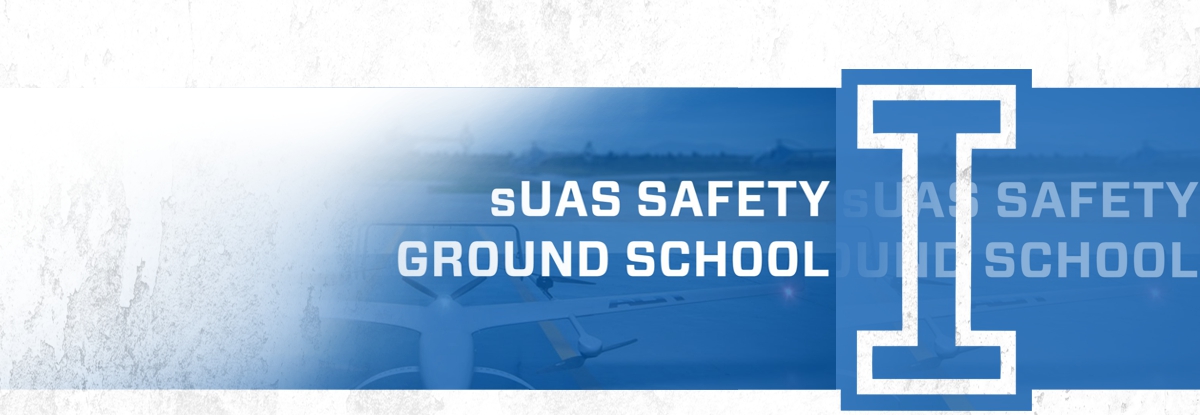sUAS Safety Ground School
The Small UAS (sUAS) Ground School Course sets a sturdy foundation of required aeronautical knowledge for remote pilots of UAS less than 55 pounds. The curriculum addresses all pertinent aeronautical knowledge factors outlined by the FAA for the Unmanned Aircraft General (UAG) examination and augments those with safety concepts and practices to develop well-informed and responsible remote pilots. Students who successfully complete the course receive a certificate of completion from the Unmanned Safety Institute and are well prepared to pass the UAG exam. The
Course Consists of Eight Units:
Unit 1: Small UAS Foundations
- Examines terms of reference, major issues associated with Small Unmanned Aircraft Systems (sUAS) and the core components of an unmanned system
- UAG Knowledge Areas: None
Unit 2: Unmanned Aircraft
- Examines the sub-components of Unmanned Aircraft (UA) and the factors affecting UAS aerodynamics and performance
- UAG Knowledge Areas: Small unmanned aircraft loading; determining the performance of small-unmanned aircraft
Unit 3: Elements
- Examines the environment in which sUAS and remote pilots operate
- UAG Knowledge Areas: Aviation weather sources and effects of weather on small-unmanned aircraft performance
Unit 4: Regulations
- Explores the limitations and authorities vested in remote pilots by 14 CFR 107
- UAG Knowledge Areas: Applicable regulations relating to small unmanned aircraft system rating privileges, limitations, and flight operation; Airspace classification; operating requirements, and flight restrictions affecting small unmanned aircraft operation
Unit 5: Operating in the National Airspace
- Explains the FAA established rules and policies for operating in the National Airspace System.
- UAG Knowledge Areas: Airport operations; Radio communication procedures
Unit 6: The Human Factors of UAS and CRM
- Defines human limitations as they contribute to errors and violations that can be the causal factors in UAS accidents. Crew Resource Management (CRM) introduces non- technical skills used to combat human errors
- UAG Knowledge Areas: Crew resource management; Physiological effects of drugs and alcohol
Unit 7: Aeronautical Decision Making
- Explores the process of assessing risks and examines the decision-making process once the operator has a clear picture of the risk
- UAG Knowledge Areas: Aeronautical decision-making and judgment; preflight inspection procedures
Unit 8: Professionalism
- Examines the ethical and legal requirements of the Remote Pilot in Command (RPIC). Establishes standards of practice as well as explores careers in unmanned aviation
- UAG Knowledge Areas: Emergency procedures; Maintenance
COMPLETION:
The following certificates are awarded when the course is completed:
- sUAS Safety Ground School 2017 powered by the Unmanned Safety Institute

